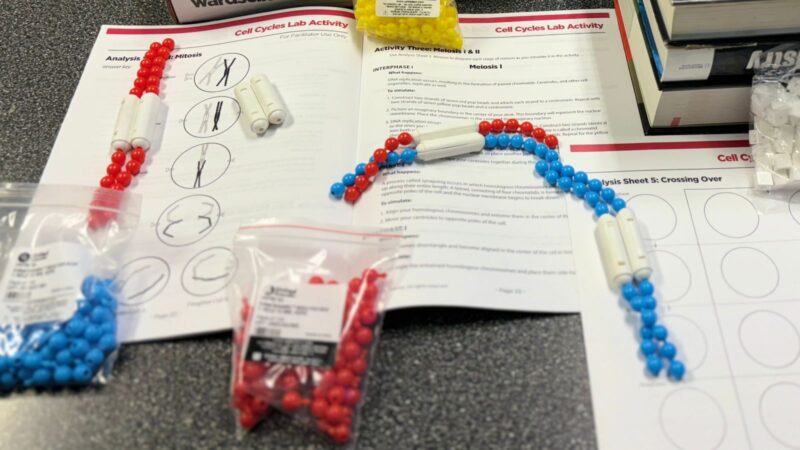Science comes alive in the classroom with Ward’s Science Engage Cell Cycles kit. This hands-on resource makes teaching and learning about cell cycles both interactive and entertaining, making this biology kit a We Are Teachers Teacher Pick. It combines simplicity with engagement, giving students a chance to explore biology concepts through inquiry-based learning.
One of the standout features of Ward’s Science Engage Kits is their commitment to teacher support. With free access to professional development and alignment to NGSS standards, these kits provide everything educators need to confidently bring science lessons to life.
To see how it performs in action, we sent the Engage Cell Cycles kit to high school science teacher Selim Jamil, who tested it with his 9th grade biology class. Here’s his Teacher Picks review and why he’s eager to use this kit in all of his science classes.
What grade levels is the Ward’s Engage Cell Cycles kit best suited for?
9th grade biology and junior/senior-level AP biology.
How did you use the kit in your science classroom?
I am using the Engage Cell Cycles kit to model and teach 9th graders how mitosis works in a cell. Students are able to demonstrate their understanding of the process of mitosis and are able to imagine what can happen when the process does not work well.

How will your students use this?
Students always have questions about how to use the model properly. But once we use the model properly, I ask the students to try to come up with ways in which the model wouldn’t work. That is when their creativity comes into play. The students come up with situations in which the genetic material doesn’t separate and in which one daughter cell does not get a full complement of DNA.
Essentially what they are able to do is figure out a whole slew of genetic potential problems before I ever introduce them to the students. They might not know the name of the genetic problems, but they have figured out the mechanisms under which these can occur.
How would you sum up how you feel about this science kit?
It’s great! I am a big fan of lab material that has specific purposes but can easily be used in a general lab setting. This is something I can use for multiple labs.
What was your favorite thing about the kit?
I like that this can be used for 9th grade labs where the material is relatively simple. Then it can also be used for a more complex advanced biology class. Students can use the model to understand relatively simple phenomena like mitosis but also significantly more complex phenomena like mitosis, mutations, and genetic recombination. I also love the versatility of the model. I can use it to demonstrate processes for plant and animal cells. Plus, I can use the model with the specific assignments that come with the material, but I can also use it with my and my students’ imaginations.

What makes this product special compared to others?
I don’t like “cookie-cutter” labs. Many labs have a set way that they need to be used. Follow steps 1-17, then here is the right answer that students should be able to give to demonstrate their learning.
This model doesn’t require students to come to a right answer. I can demonstrate how to use it and then they can imagine different scenarios under which it might operate. Some might be correct. Some might be incorrect. But if they can imagine different ways in which the chromosome might split and they can articulate it clearly, they are engaged in scientific exploration.
Until my school decides to let me spend $3,000 on a genetic engineering lab kit, this is the closest that students will get to being able to demonstrate their understanding of the principles of genetic reproduction in a meaningful way. This is actually more valuable than a genetic engineering lab kit. This is because it allows students to directly visualize what is happening in the nucleus.
How did the biology kit make teaching easier?
Normally when I teach the process of mitosis, I just show a video of chromosomes moving along the nuclear membrane. That’s fine and useful, but this allows students to be actively engaged in trying to understand this phenomenon. They are not passively watching something occurring—they are actively looking for ways in which it can occur and then explaining what they think is occurring.
This model lets students experiment with different mechanisms for genetic reproduction and division in a way that watching it occur would never allow.
Is there anything else you’d like us to know about the Ward’s Science Engage Cell Cycles Kit?
I am generally not a fan of prefabricated labs. I don’t like the idea that science has a set conclusion. This model allows for scientific exploration and is ideal for young scientists. There aren’t immediately obvious rules other than what logic dictates. Students can engage in a kind of playful exploration that will enlighten them as they start to understand the principles we explore in class. This is a wonderful addition to my class and will serve me for the rest of my teaching career.
Check out Selim’s video review.


